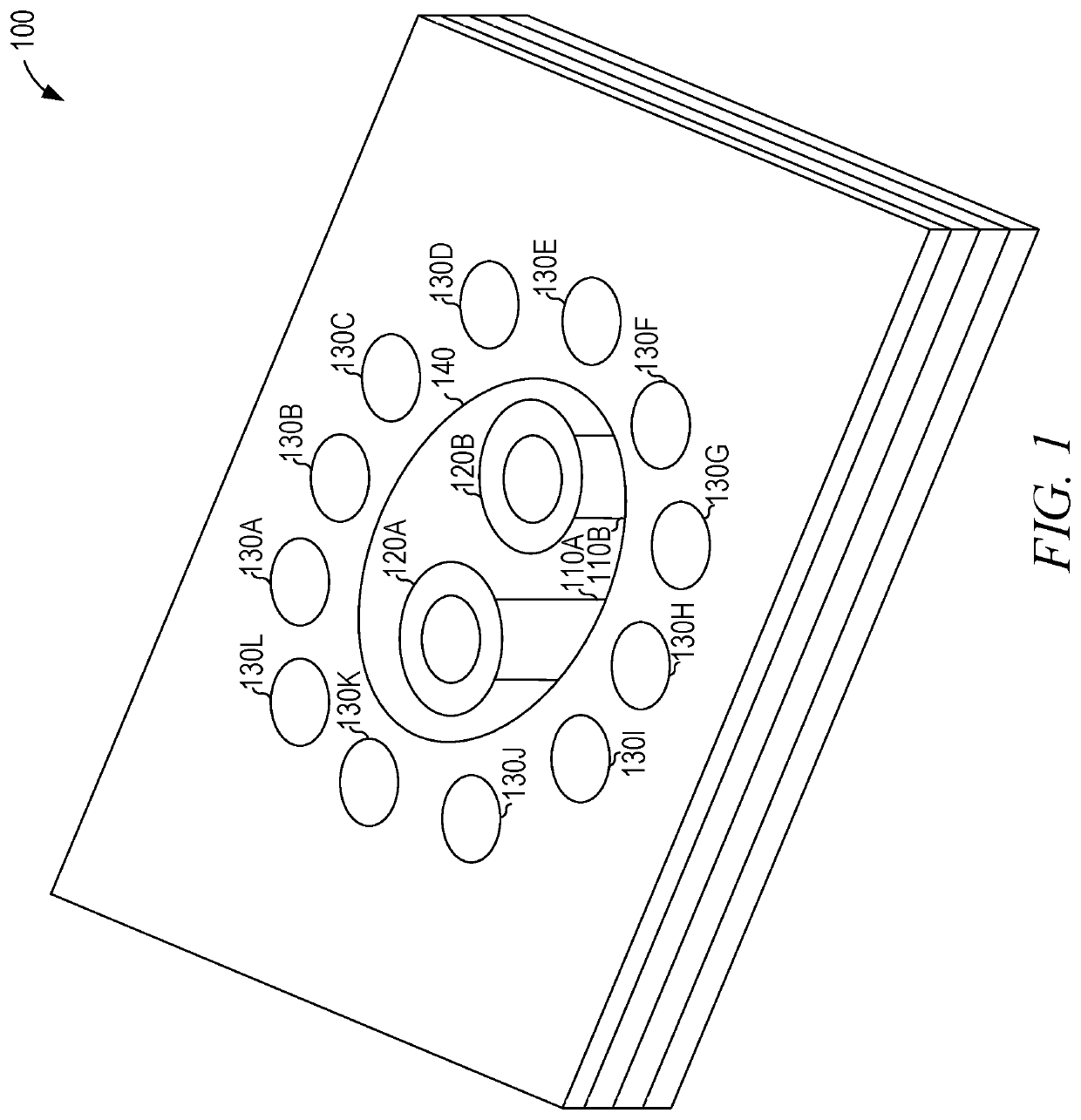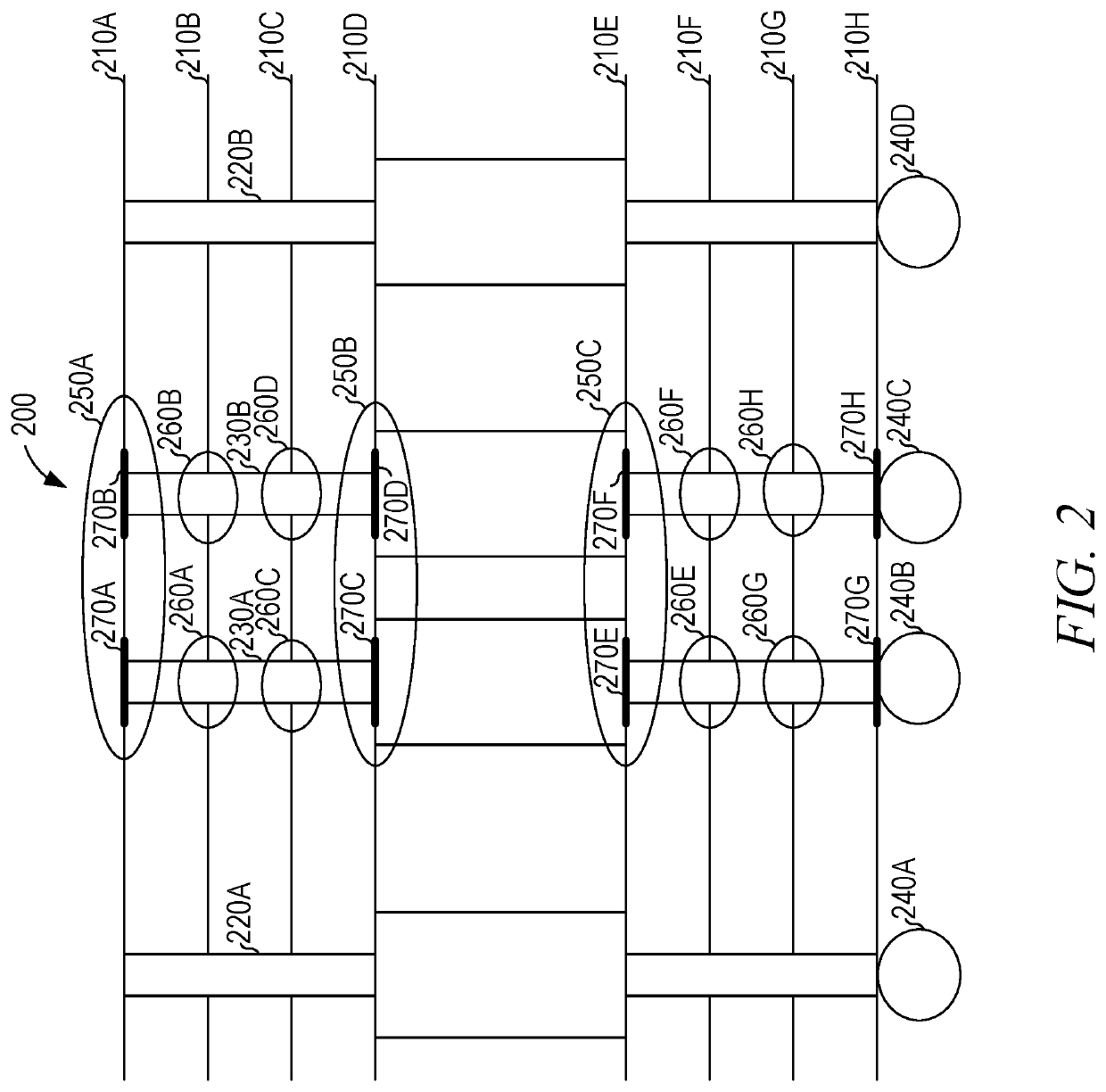Capacitive compensation for vertical interconnect accesses
a technology of vertical interconnection and compensation, applied in the direction of high frequency circuit adaptation, impedence measurement, printed element electric connection formation, etc., can solve the problems of increased operating frequency, increased power consumption per operation of the resulting circuit, and signal loss
- Summary
- Abstract
- Description
- Claims
- Application Information
AI Technical Summary
Benefits of technology
Problems solved by technology
Method used
Image
Examples
examples
[0067]Example 1 is a multi-layer circuit comprising: a first circuit layer; a second circuit layer; a third circuit layer between the first circuit layer and the second circuit layer; a differential vertical interconnect access (VIA) connecting the first circuit layer and the second circuit layer, the differential VIA comprising at least two conductive elements for conducting a differential signal between the first circuit layer and the second circuit layer, the at least two conductive elements being surrounded by a single non-conductive region on the first circuit layer and the second circuit layer, the at least two conductive elements being surrounded by separate non-conductive regions on the third circuit layer.
[0068]In Example 2, the subject matter of Example 1 includes, wherein: the differential VIA comprises: a first VIA pad on the first circuit layer; and a second VIA pad on the second circuit layer; and the differential VIA lacks a VIA pad on the third circuit layer.
[0069]In...
PUM
| Property | Measurement | Unit |
|---|---|---|
| impedances | aaaaa | aaaaa |
| peak impedance | aaaaa | aaaaa |
| peak impedance | aaaaa | aaaaa |
Abstract
Description
Claims
Application Information
 Login to View More
Login to View More - R&D
- Intellectual Property
- Life Sciences
- Materials
- Tech Scout
- Unparalleled Data Quality
- Higher Quality Content
- 60% Fewer Hallucinations
Browse by: Latest US Patents, China's latest patents, Technical Efficacy Thesaurus, Application Domain, Technology Topic, Popular Technical Reports.
© 2025 PatSnap. All rights reserved.Legal|Privacy policy|Modern Slavery Act Transparency Statement|Sitemap|About US| Contact US: help@patsnap.com



